Ever had your Echo PPT-2620 pole saw act up right when you needed it most? I sure have! The first time I used mine, I thought, “This thing is a beast!”—until I had to troubleshoot a stubborn chain issue. That’s when I realized knowing your Echo pole saw PPT 2620 parts inside and out makes all the difference.
Whether you’re dealing with a dull chain, a shaky extension, or just figuring out which part does what, I’ve got you covered. In this guide, I’ll break it all down in plain English—no tech jargon, just real talk and personal insights. Stick with me, and let’s get your Echo PPT-2620 running like a pro!
Echo Pole Saw PPT 2620 Parts List – Know Your Tool Inside Out
If you’ve ever wrestled with a pole saw that won’t start, a chain that won’t move, or a pole that wobbles at full extension, you know how frustrating it can be. But here’s the thing—most of these issues come down to understanding your Echo PPT-2620 pole saw parts and how they work together.
I’ve been in that situation, staring at my saw, wondering what went wrong. But once I got familiar with the parts, everything became easier—maintenance, repairs, even troubleshooting on the go. So let’s break it down in plain, no-nonsense terms, so you know exactly what’s what.
1.1 Engine & Power Unit Parts

The heart of your Echo PPT-2620 pole saw is its engine. If your saw refuses to start or runs rough, chances are the problem is in one of these key components:
- Air Filter – Keeps dirt and debris from entering the engine. A clogged filter chokes airflow, leading to poor performance or a no-start situation.
Quick Fix: Check and clean it regularly—if it looks grimy, replace it. - Fuel System (Tank, Carburetor, Fuel Lines, Primer Bulb) – If your saw struggles to stay running, old fuel or clogged fuel lines are likely the culprit.
Pro Tip: Always use fresh fuel (50:1 gas-to-oil ratio), and never leave gas sitting for months—it gums up the carburetor fast. - Ignition System (Spark Plug, Ignition Coil) – A worn-out spark plug can lead to weak or no spark, making the saw impossible to start.
Troubleshooting: If it won’t fire up, check the spark plug first. Replacing it is cheap and quick. - Throttle & Stop Switch – Controls the speed and stops the saw when needed. If your saw idles too high or won’t shut off, check these switches.
Pro Tip: If your saw won’t start, check the air filter and spark plug first—they’re the usual suspects!
1.2 Pole & Extension Parts
This is where you get your reach and stability. But if your pole saw wobbles too much or doesn’t lock securely, these are the parts to check:
- Fiberglass Shaft & Telescoping Pole – Extends your reach, but if it’s not tightened properly, you’ll feel like you’re wrestling a wild snake.
Fix: Make sure all locking mechanisms are fully engaged before use. - Coupler & Clamps – These hold the extension pole in place. If they’re loose, your saw becomes unstable.
Quick Tip: Before every use, check that the clamps are secure—this prevents unexpected movement mid-cut. - Handle & Grip – If the grip starts wearing out, your hands will feel the strain. A good grip helps control and stabilize the saw.
Personal Insight: When working at maximum extension, wobbling is inevitable. But proper hand placement and firm posture help reduce it significantly.
1.3 Chainsaw Attachment Parts
This is where the real cutting happens, and keeping these parts in top shape is non-negotiable if you want smooth, effortless cuts:
- Guide Bar (10″ or 12″) – Directs the chain and ensures a clean cut. Dirt, sap, and lack of oil can cause drag and slow down your work.
Fix: Keep it clean and well-lubricated for smooth operation. - Saw Chain – This does the actual cutting. A dull or loose chain makes the job harder than it needs to be.
Golden Rule: If you see fine sawdust instead of wood chips, your chain is dull—sharpen or replace it! - Clutch & Drive Sprocket – Transfers power from the engine to the chain. If the chain slips or skips, the sprocket may be worn out.
Solution: If your chain keeps slipping, inspect the drive sprocket—a worn one needs replacing. - Chain Brake System – A crucial safety feature that stops the chain in case of kickback. If it fails to engage, do not use the saw until it’s fixed.
Pro Tip: Always check chain tension before cutting. A loose chain can derail, and a tight chain causes overheating and wear.
1.4 Oiling System Components
A dry chain burns out fast—that’s why consistent lubrication is a must. Here’s what keeps your chain running smoothly:
- Oil Pump & Reservoir – Pumps oil to the chain for friction-free cutting. If the chain starts smoking or looks dry, this might be clogged.
- Oil Delivery Lines – These feed oil from the reservoir to the chain. If blocked, the chain won’t get proper lubrication.
Common Issue: If your chain looks dry or you see burn marks on wood, your oiling system might be clogged or empty—check the oil level first!
Echo PPT-2620 Pole Saw Assembly – Step-by-Step Guide
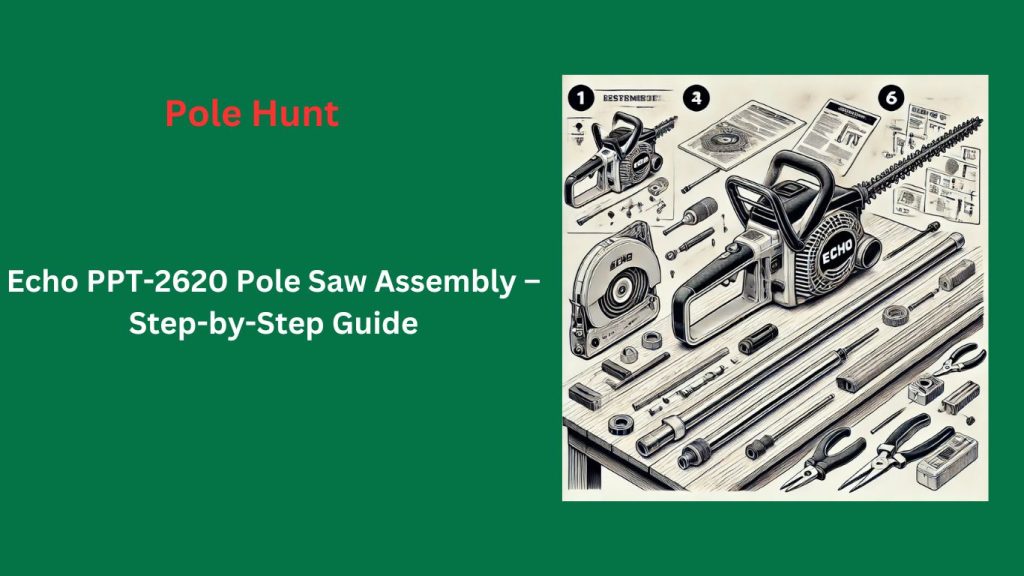
So, you’ve got your Echo PPT-2620 pole saw unboxed, and now you’re staring at the parts, wondering, “Where do I even start?” Don’t worry—I’ve been there. The first time I assembled mine, I made the rookie mistake of not securing the pole tightly enough, which led to some serious wobbling at full extension. Lesson learned!
To save you the hassle, I’m breaking it down into simple, no-fuss steps so you can get your saw up and running safely and efficiently.
Step 1: Attach the Pole Sections
The fiberglass pole is what gives this saw its impressive reach, but if you don’t secure it properly, you’ll end up fighting a wobbly mess. Here’s how to do it right:
- Align the Extension Pole with the Powerhead – Make sure the two sections are lined up correctly before pushing them together.
- Insert and Tighten the Locking Coupler – Once aligned, push the sections together until they click. Then, tighten the coupler to lock them in place.
- Test for Stability – Give it a slight shake. If there’s any movement, tighten the coupler more. A loose connection can make cutting awkward and unsafe.
Pro Tip: Before you even pick up the saw, check the locking clamps. If they’re not fully engaged, the pole might slip mid-cut—trust me, that’s a problem you don’t want to deal with!
Step 2: Install the Chainsaw Attachment
This is where the cutting power comes in. The chainsaw attachment is what transforms your Echo PPT-2620 into a branch-trimming machine.
- Position the Chainsaw Attachment at the End of the Pole – Slide the saw head into place at the far end of the pole.
- Secure the Connection – Use the provided locking bolts to firmly attach the chainsaw head to the pole. Double-check that they’re tightened properly.
- Adjust the Saw Angle (if needed) – Some users prefer a slight tilt for better cutting control. If that’s you, now’s the time to adjust.
Quick Check: If the attachment feels loose, stop and retighten the bolts. A wobbly saw head makes cutting harder and less precise.
Step 3: Adjust Chain Tension
Now that the saw is assembled, you need to fine-tune the chain tension before you fire it up. A chain that’s too loose can derail, while a chain that’s too tight overheats and wears out quickly.
- Loosen the Side Panel Bolts Slightly – This allows you to make small tension adjustments.
- Use the Tensioning Screw to Adjust the Chain – Turn it clockwise to tighten and counterclockwise to loosen. The chain should be snug but still move freely.
- Tighten Everything Back Up – Once the tension is set, re-tighten the side panel bolts to secure the adjustment.
Pro Tip: A properly tensioned chain should move smoothly when pulled but not sag. If you’re unsure, do a quick test cut on a scrap branch before tackling bigger jobs.
Final Check: Safety & Readiness
Before you fire up your Echo PPT-2620 pole saw, run through this quick pre-use checklist:
- Is the pole fully secured? (No wobbling)
- Are the locking clamps tight? (No slipping)
- Is the chain properly tensioned? (Snug but free-moving)
- Do you have proper lubrication? (Check the oil reservoir)
If everything checks out, you’re ready to go! The first time you use it, take a few test cuts on smaller branches to get a feel for the weight and balance.
Personal Insight: The first time I extended mine to the full 12+ feet, I underestimated how much control I’d need. Keeping a firm grip and using both hands strategically makes a huge difference. If you feel wobbly at full extension, try bracing the pole against your shoulder for better stability.
Echo PPT-2620 Pole Saw Repair & Common Issues
Even the best pole saws can run into problems. Trust me, I’ve been there—midway through a big trimming job, and suddenly, the chain won’t move, the engine sputters, or oil stops flowing. Frustrating? Absolutely. But the good news is that most issues with the Echo PPT-2620 pole saw have simple fixes.
Let’s go through the most common problems and how to get your saw back in action quickly.
4.1 The Pole Saw Won’t Start
You pull the cord, and… nothing. Or maybe it coughs and sputters but won’t stay running. Before you panic, here are the first things to check:
- Check the Fuel Mix – The Echo PPT-2620 runs on a 50:1 gas-to-oil ratio. If the fuel is old or mixed incorrectly, your saw won’t start or will run poorly.
Quick Fix: Always use fresh fuel. If the gas is older than 30 days, drain and replace it. - Inspect the Spark Plug – A dirty or worn-out spark plug prevents ignition.
Troubleshooting Tip: Remove the spark plug and check for carbon buildup or a worn electrode. If it’s blackened or cracked, swap it out. - Examine the Air Filter – A clogged filter suffocates the engine, making it hard to start.
Fix: Take out the air filter, tap it clean, or replace it if it looks too dirty.
Pro Tip: If your saw cranks but won’t stay running, try this trick—press the primer bulb a few times, then pull the starter cord with half throttle. This can help get fuel moving properly.
4.2 Chain Not Moving or Slipping
Nothing’s more frustrating than revving up your saw, only to see the chain refuse to move. Here’s what could be happening:
- Is the Chain Too Loose? – A slack chain won’t engage properly and can derail mid-cut.
Quick Fix: Use the chain tension adjustment screw to snug it up. A properly tightened chain should move freely but not sag. - Sprocket Wear & Tear – The drive sprocket transfers power to the chain. If it’s worn down, the chain might skip or stop moving.
Solution: Remove the side cover and inspect the sprocket. If you see deep grooves or uneven wear, replace it. - Clutch Issues – If the clutch is slipping, the chain won’t spin even when the engine is running.
How to Check: With the engine off, try spinning the chain by hand. If it doesn’t move smoothly, your clutch might be the culprit.
Personal Experience: I once had my chain stop mid-job, thinking the saw was broken. Turns out, I had forgotten to tighten the chain after swapping it out. Lesson learned—always check tension before cutting!
4.3 Oil Not Reaching the Chain
A dry chain is a disaster waiting to happen—it’ll overheat, dull quickly, and even damage the guide bar. If you notice the chain smoking or looking dry, your oiling system might be clogged.
Here’s how to get oil flowing again:
- Check the Oil Reservoir – The simplest fix is sometimes the most obvious—is there enough oil in the tank?
Quick Fix: If the tank is empty, refill with bar and chain oil and test again. - Inspect the Oil Delivery Line – Over time, sawdust and debris can clog the line, preventing proper lubrication.
Solution: Remove the oil line and blow compressed air through it to clear blockages. - Test the Oil Pump – If the pump is faulty, no oil will reach the chain.
How to Check: Hold the saw over a surface and rev the engine—if no oil splatters onto the bar, the pump may need replacing.
Pro Tip: If your chain looks dry or starts producing smoke while cutting, stop immediately and check the oil system. A well-lubricated chain is the key to smooth and efficient cutting.
Essential Maintenance for Long-Lasting Performance

If you want your Echo PPT-2620 pole saw to last, regular maintenance is non-negotiable. Trust me, I learned this the hard way—ignoring simple upkeep led to a gummed-up carburetor and a chain so dull it felt like I was chewing through branches instead of cutting them. A little routine care saves time, money, and frustration.
Here’s a straightforward maintenance routine to keep your pole saw running like new.
Keep the Air Filter Clean
A dirty air filter chokes your engine, making it work harder and potentially causing starting issues.
How Often? Every 10 hours of use or sooner if you work in dusty conditions.
Quick Fix: Remove the air filter, tap out debris, or wash it with mild soap and water. If it’s still clogged, replace it—they’re cheap and easy to swap.
Pro Tip: If your saw suddenly loses power, check the air filter before messing with the carburetor.
Keep Your Chain Sharp
A dull chain makes cutting slow and frustrating. Plus, it forces the motor to work harder, wearing it out faster.
How Often? Sharpen after every few uses, especially if you’re cutting hard or dirty wood.
Quick Fix: Use a round file to sharpen the chain teeth. If you’re not comfortable doing it yourself, take it to a pro—it’s worth it.
Sign It’s Dull: If your saw is producing fine sawdust instead of wood chips, the chain needs sharpening.
Check and Adjust Chain Tension
A loose chain can derail mid-cut, and a too-tight chain wears out the bar and motor prematurely.
How Often? Before every session.
Quick Fix: Use the tension screw to adjust the chain so it’s snug but moves freely.
Pro Tip: After running the saw for a few minutes, re-check the chain tension—it can loosen up as it warms.
Drain Fuel if Storing for a While
Old gas is one of the biggest reasons small engines won’t start. Over time, it gums up the carburetor, leading to costly repairs.
How Often? If storing for more than a month.
Quick Fix: Run the saw until it’s dry, or add a fuel stabilizer to prevent the gas from going bad.
Personal Experience: I once left fuel in my saw over the winter, and when I tried to start it in spring—nothing. Ended up rebuilding the carburetor. Don’t make that mistake!
Lubricate Moving Parts
Your pole joints, clamps, and couplers need occasional lubrication to prevent sticking and wear.
How Often? Every few uses.
Quick Fix: Apply light oil or silicone spray to the pole extensions and moving parts for smooth operation.
Pro Tip: If your pole saw feels stiff when extending, it’s time for lubrication.
Bonus Tip: Keep Spare Parts Handy
Nothing kills productivity faster than a broken part and no replacement. I always keep a spare chain, spark plug, and air filter in my toolbox—trust me, it saves headaches.
- Must-Have Spares:
- Extra chain (for when yours gets too dull mid-job)
- New spark plug (cheap fix for a no-start issue)
- Spare air filter (prevents unexpected downtime)
FAQs – Answering Your Most Common Questions
When it comes to the Echo PPT-2620 pole saw, I’ve heard just about every question there is. Whether you’re troubleshooting an issue, looking for the right parts, or just trying to get the most out of your saw, I’ve got you covered.
Here are the most frequently asked questions—answered in plain English, so you can spend less time searching and more time cutting.
Q1: Where can I find a full Echo PPT-2620 parts diagram?
You can find the complete Echo PPT-2620 parts diagram in the official Echo user manual or on Echo’s website. Most authorized Echo dealers and parts suppliers also provide downloadable diagrams.
Quick Tip: If you need specific replacement parts, searching by model number (PPT-2620) will help you get the right fit.
Q2: How do I adjust the chain tension properly?
If the chain is too loose, it won’t cut efficiently and may derail. If it’s too tight, it can overheat and wear out quickly.
The right way to adjust chain tension:
- Loosen the bar nuts slightly (they hold the guide bar in place).
- Turn the tensioning screw clockwise to tighten, or counterclockwise to loosen.
- Check the tension by pulling the chain—it should be snug but still move freely.
- Re-tighten the bar nuts once the tension is right.
Pro Tip: Always check chain tension before each use—it loosens up as you cut!
Q3: What’s the best bar oil for Echo PPT-2620?
The best bar and chain oil for the Echo PPT-2620 is a high-quality bar oil with a tackifier, which helps the oil stick to the chain and reduce wear.
Best Options:
Echo-branded bar and chain oil (specifically made for Echo saws).
Any premium-grade bar oil (look for ones that resist “flinging off” at high speeds).
What NOT to use: Avoid using motor oil or used engine oil—they don’t have the right viscosity and can damage your saw.
Q4: My pole saw wobbles at full extension—what’s wrong?
If your Echo PPT-2620 feels wobbly when fully extended, the issue is likely with the locking couplers or clamps.
How to fix it:
- Check the locking clamps—if they’re loose, tighten them securely.
- Inspect the shaft—a bent or damaged shaft can cause instability.
- Hold the saw properly—gripping the pole too low can make it harder to control.
Personal Insight: When I first used mine, I struggled with the wobbling too. What helped? Bracing the pole against my shoulder and using a firm grip with both hands—it made cutting much easier!
Q5: Can I use the Echo PPT-2620 for professional work?
Absolutely! The Echo PPT-2620 is a commercial-grade pole saw, designed for heavy-duty trimming. It’s commonly used by:
Arborists
Landscapers
Tree-trimming professionals
Homeowners with large properties
Heads-up: If you’re using it for professional work, regular maintenance is key. Keep extra chains, spark plugs, and air filters on hand to avoid downtime.
This video owner name: The Harrell Homestead
Conclusion – Is the Echo PPT-2620 Right for You?
By now, you’ve got a complete understanding of the Echo PPT-2620 pole saw—its parts, maintenance, troubleshooting, and assembly. But the big question remains: Is it the right tool for you?
Who should buy the Echo PPT-2620?
Professional landscapers & arborists – Built for heavy-duty, everyday use.
Homeowners with large properties – Ideal for frequent trimming and maintenance.
DIY enthusiasts – If you love maintaining your own trees, this saw is a powerhouse.
Who might not need it?
Casual users – If you only need to trim a few branches a year, a smaller electric or manual pole saw might do the job.
Budget-conscious buyers – The Echo PPT-2620 is an investment, but it’s worth it for those who need serious performance.
Final Thoughts:
The Echo PPT-2620 is a workhorse. With the right maintenance, it will serve you for years without major issues. If you keep your chain sharp, check oil levels, and store it properly, you’ll have a reliable, go-to tool for all your tree-cutting needs.
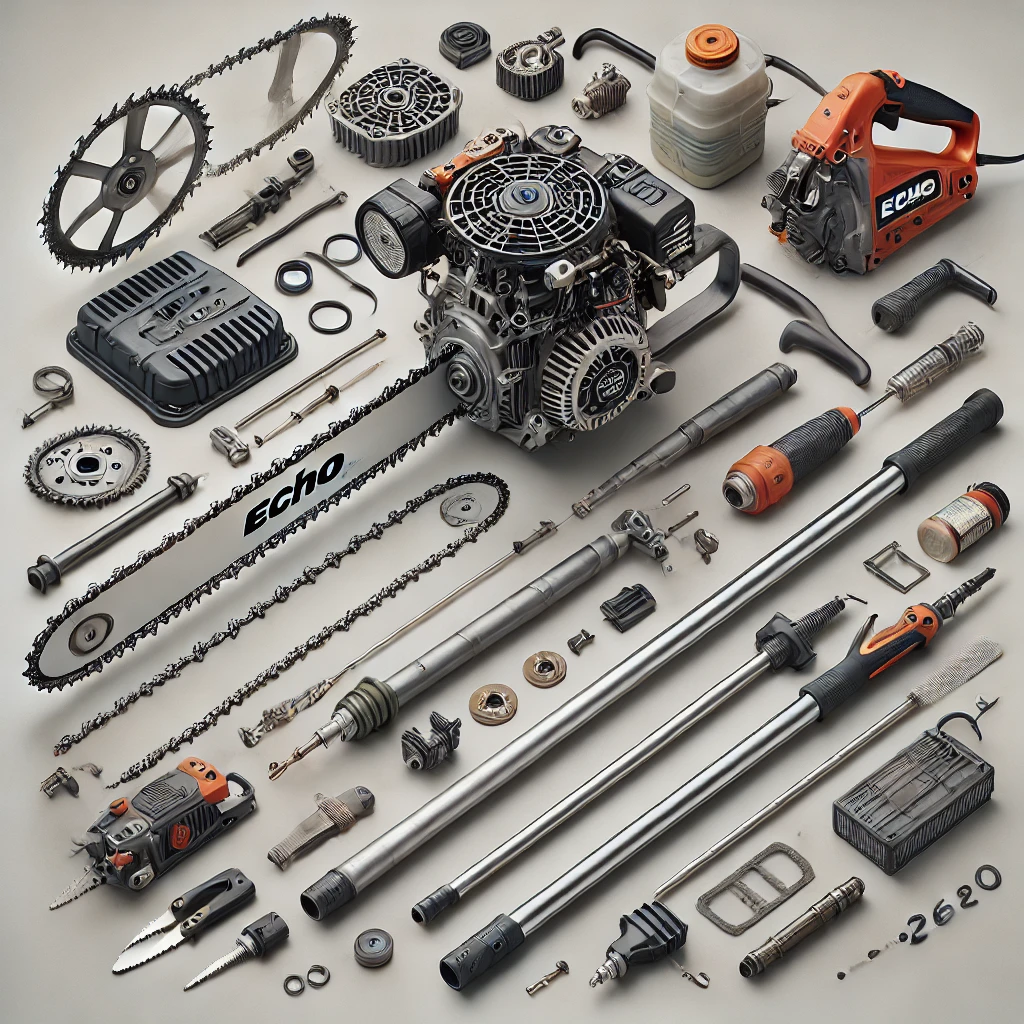
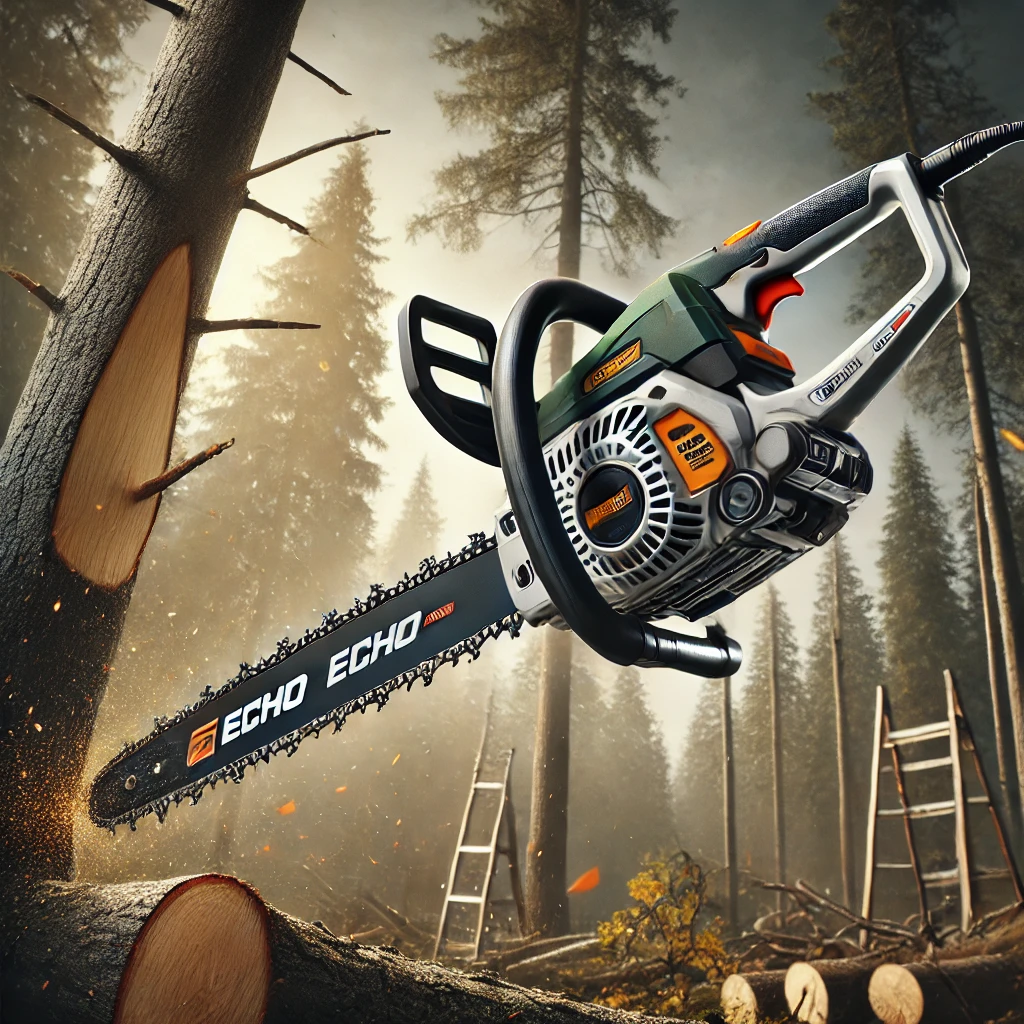
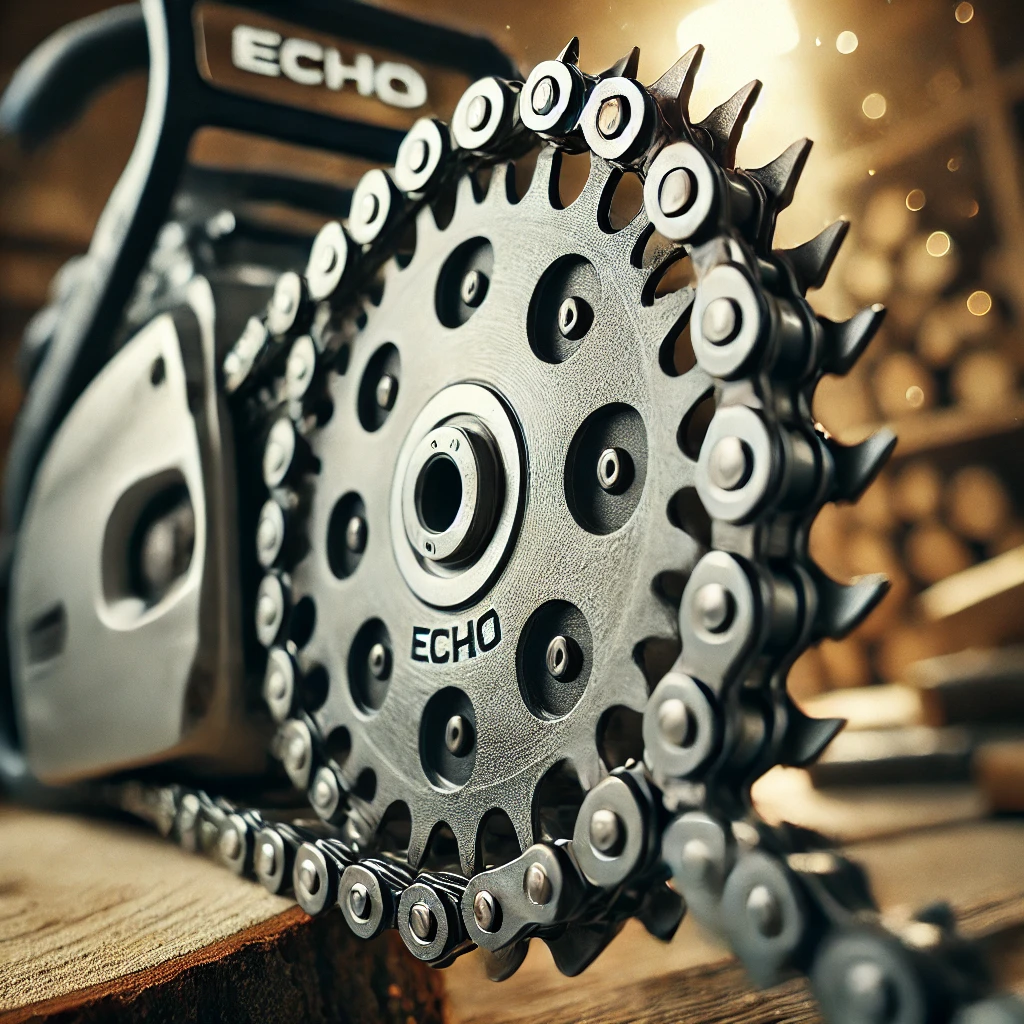
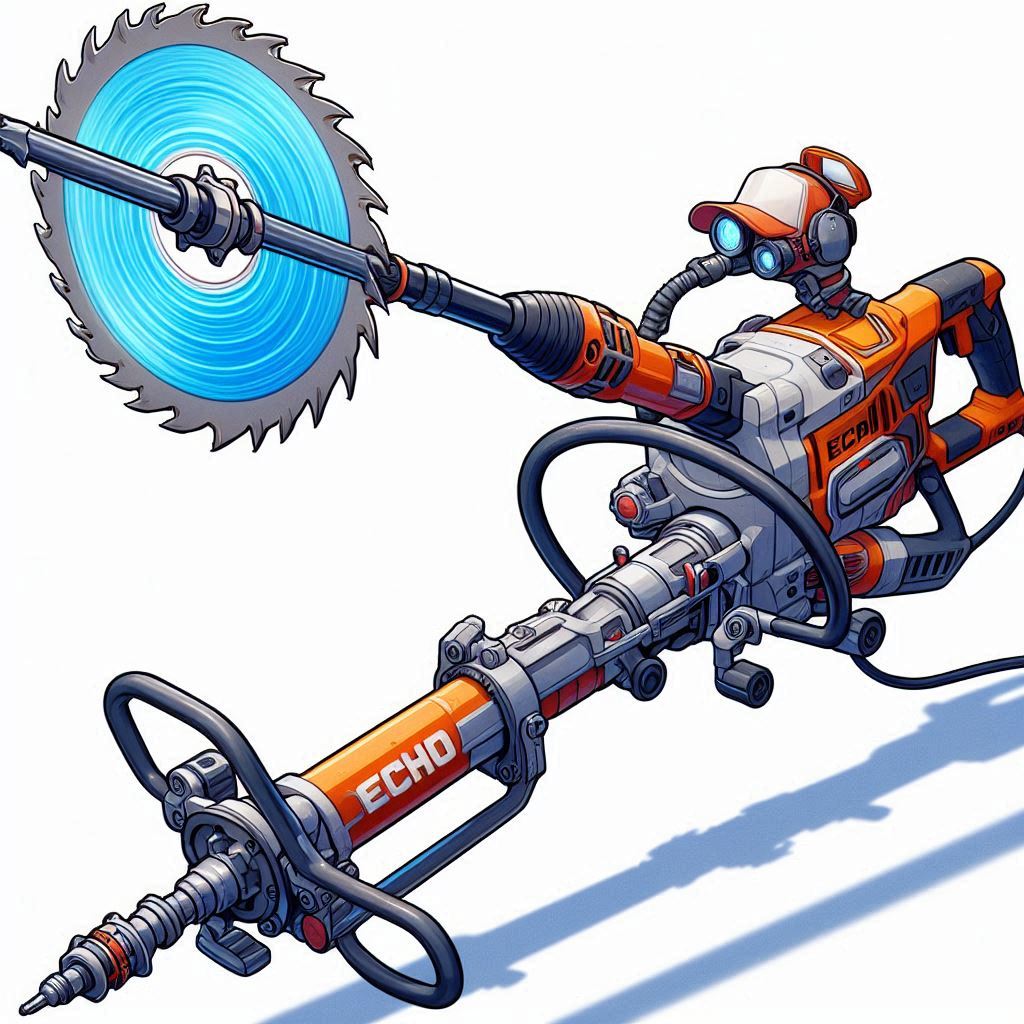
Leave a Reply